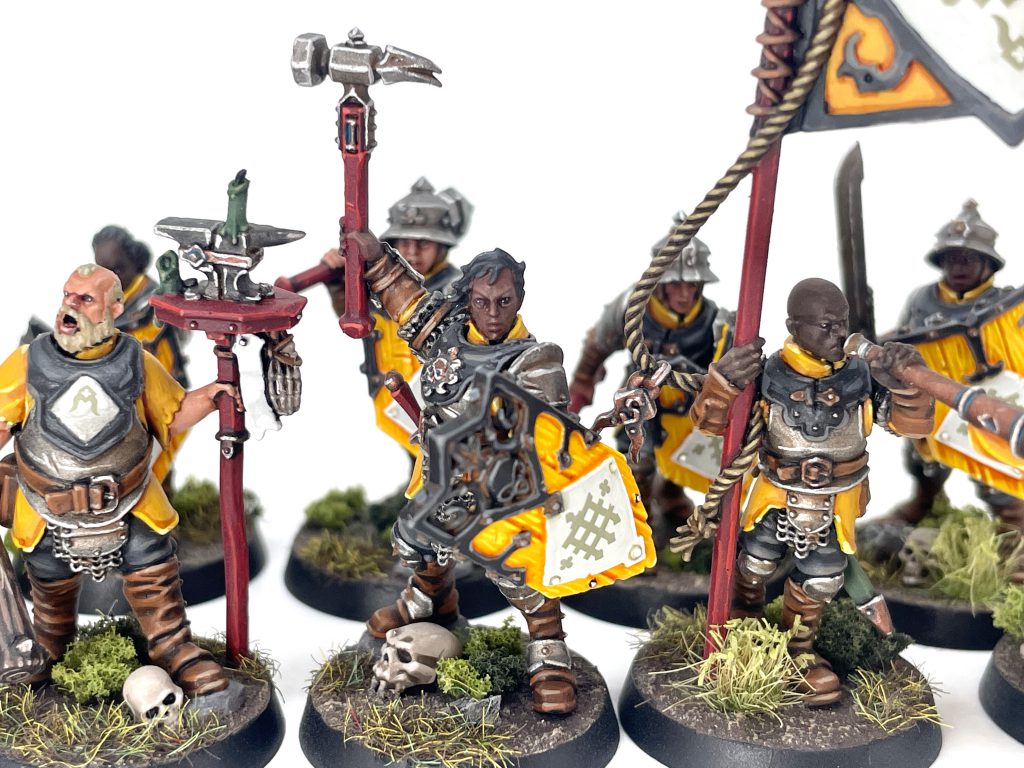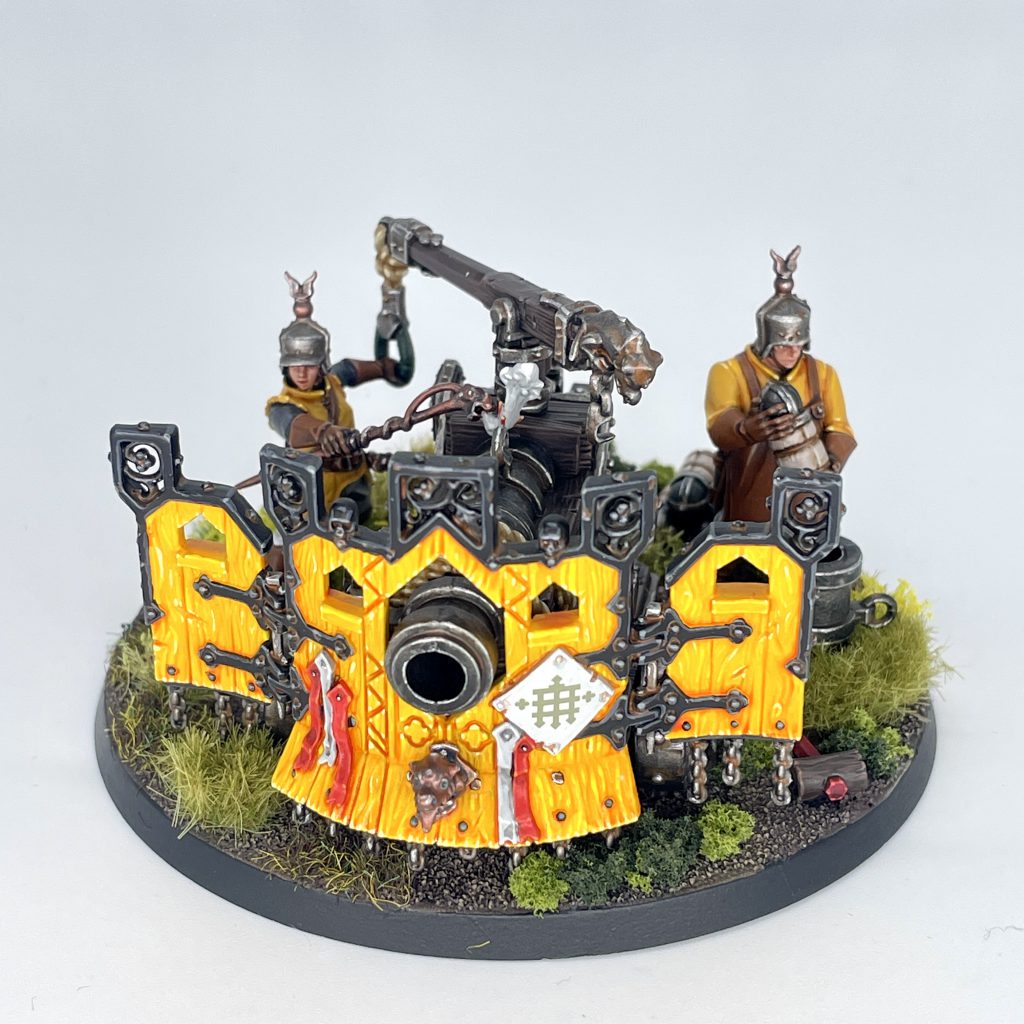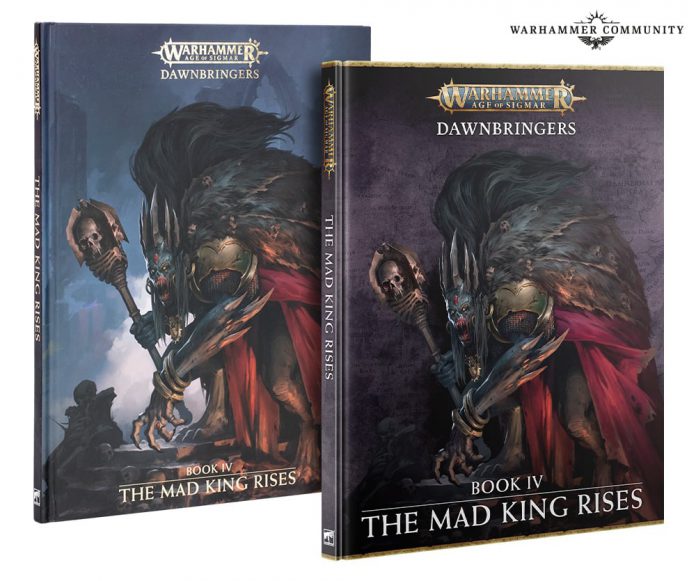This review was completed using a free review copy of Dawnbringers: The Mad King Rises provided to us by Games Workshop.
If you missed the first part then go and check that out for the lore. Here we’ll be looking over the new Narrative rules between Triumph and Treachery and Path to Glory.
Triumph and Treachery
In short: multiplayer Age of Sigmar. This is a set of rules that allows for “three or more players” to play a single game with “makeshift alliances and dastardly backstabbing”. What group of gaming friends wouldn’t want an official set of rules for that? Whatever you know about normal Age of Sigmar is largely overthrown here with Command Points not being generated the normal way and only one other player being the “enemy” each turn with remaining players “neutral”.
Every player starts with 50 Command Points and does not gain any from Battalions or in the normal way each turn. That sure is a lot of Command Points I hear you thinking. It is. You’re not only using them for commands! And might not even have the chance to, either…

Enemy and Neutral Players
At the start of each turn you choose one of the other players to be your enemy in that turn and that’s the only player that can unbind your spells or perform heroic actions. You still can’t move within 3″ of “neutral” models mind but you can only choose “enemy” models as the target of your attacks and charges. Only friendly and enemy minis fight in the fight phase, too, leaving potentially a large portion of the table not activating in some turns. That’s a good thing, really, and sounds like it actually keeps the game moving; every player doing things every single turn would just be a slog to get through.
Neutral players don’t just wander off and do nothing, though. They can influence the state of play with ploys.
Treacherous Ploys
Here’s where your command points are going to be spent. Neutral players can roll for bonus ploys and you can receive more by making deals with players.
If you have the most Victory Points you’re allowed to purchase a single ploy, other players can purchase up to two, and the player with least points can purchase up to three. There are of course other restrictions so it doesn’t get too silly. Ploys are, as expected, one use things but you can keep purchasing them over and over in later turns. Some of these are triggered off of units doing things like casting spells or attacking – where this is the case the player is allowed a take-back and cancel their action to avoid the ploy’s effect.
There are in total 26 ploys you can buy costing 1, 2, or 3 command points. Effects range from simply stopping a command to be issued to halving a unit’s charge move, or even to avoid being the chosen enemy for the turn completely! Some ploys are for Neutral players only to activate such as Ambushing Fire to shoot with one of your units at the chosen enemy; one of the costlier ones at 3CP.

Battle Plans
As you’d expect there are four unique battleplans to use in your multiplayer games. The games are recommended to be on the standard 44″x60″ board as a minimum, have 4 territories marked out on each and reserves being used since some armies won’t be able to fully deploy. These are all pretty simple fighting each other over a central objective or part of the board and scoring points for killing units tied to their points cost. Each also has a twist that adds more flavour; Altar of the Gods has a central objective, an altar (presumably of the gods) which gives the controlling unit a 5+ ward. Being in the centre of the table they’ll attract a lot of fire so that extra defence will help any unit that doesn’t already have it.
Contest of the Mortarchs
There is a fifth additional battleplan focuses around Mortarchs of Nagash fighting against each other. This game requires/recommends 5 players with one assuming the role as Nagash himself who oversees the battle in a game master’s role. One part of this role includes keeping a tally of all command points with players writing secret missives to Nagash each turn declaring how many command points they will use but also of any assassination attempts being carried out. The target is announced, but not who carried out the attempt, and the enemy General has a chance of being slain from it.
The Contest of Mortarchs has its own hidden agendas for players to make use of as well as the normal ploys. Take your Mortarchs to the table with their accompanying minions and see who comes out on top! Thematically very cool and if you happen to have a few players local with these heroes worth trying for something different on games night.
Path to Glory
Carrying straight on with the previous book’s Path to Glory sections this can be used as a standalone pack or as a tie-in with other chapters. This is Chapter 3 of the Twin-Tailed Crusade: Diplomacy and Deceit. You do not have to have played the previous chapters but your units gain more abilities through campaigning if you do. If campaigns and story-driven gaming is your bag then absolutely go back and start with Chapter 1!
This chapter covers a new mini-campaign within your overarching one with branching quests, veteran abilities, multi-player battleplans, and plenty of crusade points to win. I do love how this narrative is progressing and allowing players to add more depth to games.

Crusading Onwards
The Mad King’s narrative gaming is very clearly focused on multi-player games and ruining long-standing friendships with tactical (and spiteful?) ploys.
Really though this to me is a clear sign to the end of an edition. The last few months of any edition is when Games Workshop likes to start putting in the funny rules whether that’s insane magic, multi-player games, or something else. These definitely seem like a lot of fun for a change of pace with your gaming group but I do wonder just how much use they’ll actually get?
We’re covering the rest of the book as well including the new Army of Renown, Regiments of Renown, and advancements in Lore so check out those articles!
Have any questions or feedback? Are you going to try these multi-player rules?? Drop us a note in the comments below or email us at contact@goonhammer.com.


